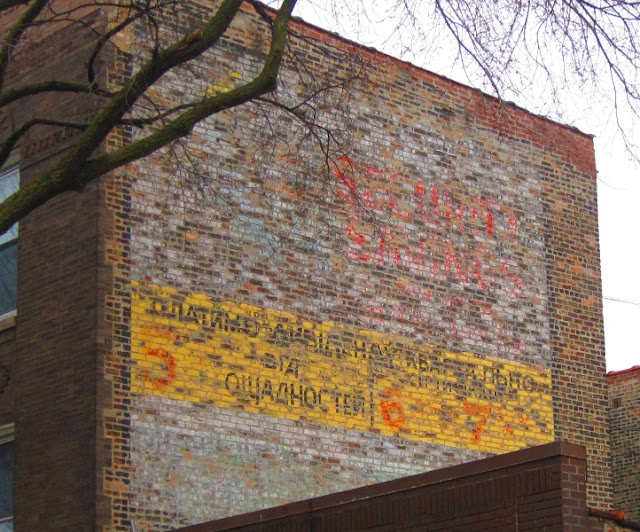Ukrainian-Language Ghost Sign in Chicago

Due to historical reasons, there are very few Ukrainian-language ghost signs in Ukraine, but in the Ukrainian Village (a neighborhood on the north side of the city) in Chicago, there is one in Ukrainian, and it is possible that there had been more. The one that I found is for a Ukrainian bank (Security Savings Bank) that was bought out by MB Financial Bank about 10 years ago. The ghost sign is probably from the 1960s or 70s. Security Savings Bank Платимо дивіденду квартально 5% від ошадностей (translated: Dividends paid quarterly 5% interest on savings)








